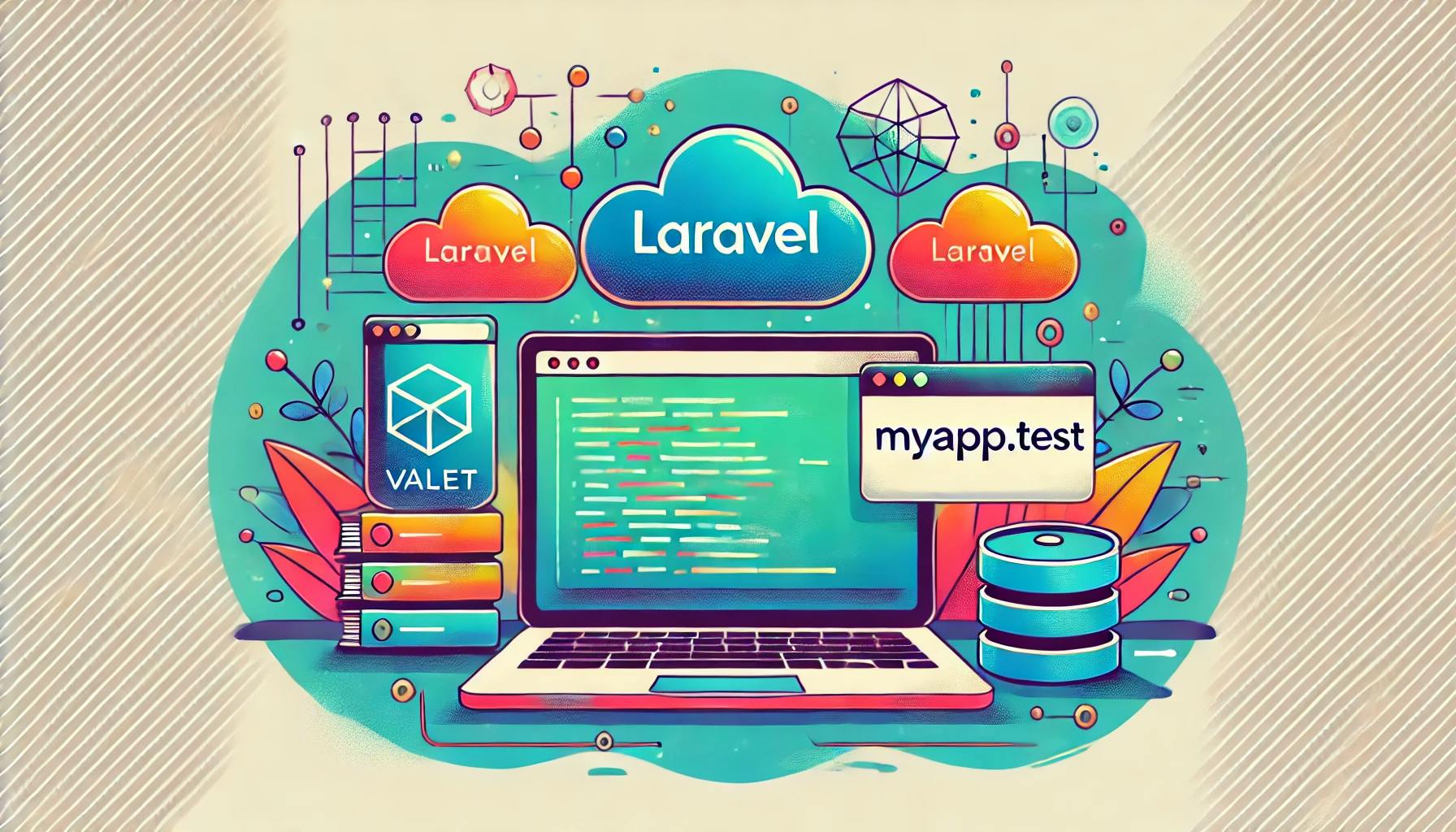Setting Up Development Domains with Laravel Valet
Feb 13, 2025

Introduction
Setting up a local development environment is crucial for efficient web development. Laravel Valet provides a lightweight and flexible solution for managing local development domains on macOS. This guide walks you through installing Valet, setting up development domains, and configuring proxies for your projects.
1. Install Composer
First, ensure you have Composer installed, as Laravel Valet requires it. Run the following command:
brew install composer2. Install Laravel Valet
Valet is a minimalistic development environment for macOS that uses Nginx and Dnsmasq to manage local domains.
2.1 Install PHP
Before installing Valet, ensure PHP is installed:
brew install php2.2 Install Valet via Composer
Next, install Valet globally using Composer:
composer global require laravel/valetOnce installed, run the Valet installation command:
valet installThis command sets up Valet and configures Dnsmasq for local domain resolution.
3. Setup Development Domains
To define a custom top-level domain (TLD) for your local projects, use:
valet domain devThis sets up *.dev domains to resolve to your local machine.
4. Configure Proxies
If you need to proxy requests to a running local service (such as a frontend app running on port 3000), use the valet proxy command:
valet proxy yoursite.pl http://127.0.0.1:3000 --securevalet proxy yoursite.com http://127.0.0.1:3000 --securevalet proxy yoursite.rs http://127.0.0.1:3000 --securevalet proxy yoursite.sk http://127.0.0.1:3000 --securevalet proxy yoursite.cz http://127.0.0.1:3000 --securevalet proxy yoursite.nl http://127.0.0.1:3000 --securevalet proxy yoursite.de http://127.0.0.1:3000 --securevalet proxy yoursite.co.uk.dev http://127.0.0.1:3000 --secureThe --secure flag ensures that each domain runs over HTTPS.
5. Configure Dnsmasq
To ensure your custom domains resolve correctly, edit the Dnsmasq configuration file located at:
~/.config/valet/dnsmasq.d/tld-dev.confAdd the following entries:
address=/.sk.dev/127.0.0.1address=/.cz.dev/127.0.0.1address=/.pl.dev/127.0.0.1address=/.com.dev/127.0.0.1address=/.rs.dev/127.0.0.1address=/.co.uk.dev/127.0.0.1address=/.nl.dev/127.0.0.1address=/.eu.dev/127.0.0.1address=/.de.dev/127.0.0.1listen-address=127.0.0.1This ensures that requests to these domains correctly resolve to 127.0.0.1.
6. Test Your Setup
Now, you can access your project in the browser using:
https://www.yoursite.cz.dev/Replace yoursite with the appropriate domain from your setup.
Bonus: Setting Up Development Domains on CircleCI
If you are running automated tests in CircleCI, you may need to configure Dnsmasq for development domains. Add the following steps to your CircleCI configuration file:
....- &install_dnsmasq run: name: Install dnsmasq command: | sudo apt-key adv --keyserver keyserver.ubuntu.com --recv-keys 32EE5355A6BC6E42 sudo apt-get update sudo apt-get install -y dnsmasq- &configure_dnsmasq run: name: Configure dnsmasq command: | sudo cp /etc/resolv.conf /etc/resolv.conf.backup echo "nameserver 127.0.0.1" | sudo tee /etc/resolv.conf cat /etc/resolv.conf.backup | sudo tee -a /etc/resolv.conf echo "address=/yoursite.cz.dev/127.0.0.1" | sudo tee /etc/dnsmasq.d/yoursite.conf echo "address=/www.yoursite.cz.dev/127.0.0.1" | sudo tee -a /etc/dnsmasq.d/yoursite.conf echo "address=/yoursite.sk.dev/127.0.0.1" | sudo tee -a /etc/dnsmasq.d/yoursite.conf echo "address=/www.yoursite.sk.dev/127.0.0.1" | sudo tee -a /etc/dnsmasq.d/yoursite.conf echo "address=/yoursite.pl.dev/127.0.0.1" | sudo tee -a /etc/dnsmasq.d/yoursite.conf echo "address=/www.yoursite.pl.dev/127.0.0.1" | sudo tee -a /etc/dnsmasq.d/yoursite.conf echo "address=/yoursite.com.dev/127.0.0.1" | sudo tee -a /etc/dnsmasq.d/yoursite.conf sudo service dnsmasq restart....'Test E2E - Cypress Invoicing': <<: *build resource_class: medium+ parallelism: 1 steps: - checkout - attach_workspace: at: ~/yoursite-rails - *install_dnsmasq - *configure_dnsmasq - setup_and_start_rails - restore_cache: *restore_cypress_cache....This setup ensures your CI pipeline correctly resolves development domains in CircleCI.
Conclusion
Laravel Valet provides a streamlined way to manage local development environments. By following this guide, you can set up custom local domains, configure proxies, and ensure proper domain resolution for a seamless development experience.